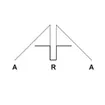
Maheshwari House
ARCHITECTS
Anil Ranka Architects
ACOUSTIC CONSULTANTS
The Sound Factory
HVAC CONSULTANTS
Weatherspell Consultant
CIVIL ENGINEERS
Om Constructions
STRUCTURE ENGINEERS
Sunil Mutalik and Associates
MANUFACTURERS
Anand Panchal, ENDO Lighting Corporation, Elemento, Hafele, Kohler, Stone Studio
DESIGN TEAM
Ar. Junaid, Ar. Mohseen, ID. Amisha
MEP CONSULTANTS
Urja Consultant
YEAR
2020
LOCATION
Pune, India
CATEGORY
Houses
CONTEXT
The site is located adjacent to the spiritual Osho Ashram. It is amidst lush green surroundings with no high-rise buildings around.
CLIENT BRIEF
The brief was to design a contemporary house for a family of ten people and their support staff. Being a joint family with people of three generations living together, the old parents were keen on the newer generations to always have glimpses of their beginnings and the history so far along the timeline.
Considering this aim, mostly customized artwork has been thought to play a very important role in revealing history and culture, acting as an expressive storytelling medium to the younger generation.
In a similar manner, it acts as a memoir to the older people who have always lived a very socio-communal lifestyle throughout the years and will be accepting the change in this somewhat secluded house amidst nature away from the city.
DESIGN PROCESS / PLANNING & CIRCULATION
The site consists of 102 trees, which we have retained by creating courtyards in our design. It is a timeless home with a transition of era and generations to accommodate different demands.
It is designed in a way that the user would experience the space not only visually but with all his five senses. The house is divided into two levels: the ground floor and the first floor. The area is segregated into four zones: Re-creational, Public, Semi-public, and private spaces to achieve complete privacy.
The built spaces are woven around the existing trees and built-in resonance with the nature around them with the least impact on the local ecology. The plan promotes cross-ventilation. The passive cooling effect is achieved by the correct placement of the water body around the cluster and skylight with ventilators—the courtyards planned in the house help with stack ventilation.
Inner spaces meet outdoor spaces without disturbing the functionality and circulation. Interior spaces open completely into the surroundings by the use of glass facades and deck areas.
MATERIAL PALLET
Analysing all the client requirements, we defined our design vocabulary with the intention of creating a user-friendly home and drafted our designs in their simplest and most elegant forms.
Hence, we chose to engage in a soothing, earthy palette by bringing in the tones of greys and browns. Natural and sustainable materials like exposed concrete sand blast finished grey granite complement the wooden flooring.
The wallpapers, antique sculptures, and soft furnishing add their own warmth and create visual interest for the user. The Furniture was kept minimalistic and modern.
This design is an amalgamation of traditional living patterns and contemporary ambiance.
INTERESTING DESIGN FEATURE: ART AS A MOMENT OF PAUSE
In these times when technology has made our lives fast, one usually finds a void created in the mental, spiritual, and communal balance in humans. There was an attempt to try and address this, with art becoming the tool of ‘Pause.
’ Though the house is quite big in terms of its scale and volume to human proportion, there is a sense of visual connectivity, with art elements becoming the anchor points of various spaces that are interconnected along the pathway.
VOLUMES
The Three-dimensional extrusion of the basic plan is modified to the context. The adaptation of basic geometric forms of the structure merges well with the surroundings.
While moving closely around the house, it expresses a different character when viewed from each perspective. The single mass is broken into modules, each having a different purpose.
The modules are a combination of blocks with varying orientations in response to the microclimate. The building is characterized by the overhang, which is creating interesting elevation and acts as a shading device for the structure.
The glazed openings in the walls soften the volume of the building. Slight color differences and stone cladding separate the volumes, creating an almost pictorial quality out of the different shades.























